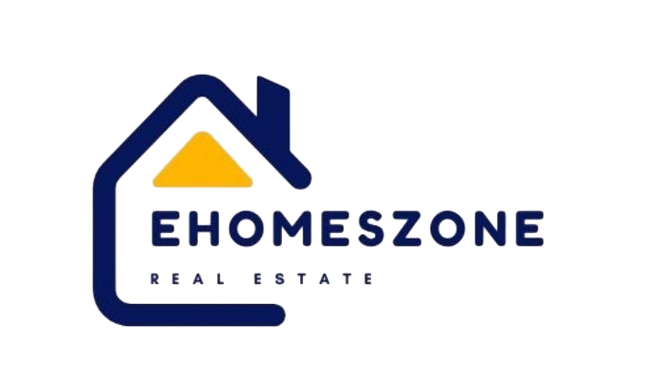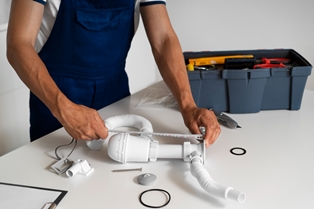Maintaining a property, whether it is residential, commercial, or industrial, is vital for preserving its value and ensuring the safety and comfort of its occupants. A well-structured property maintenance schedule not only helps avoid costly repairs but also extends the lifespan of the property’s features. In this comprehensive guide, we will discuss how to create an effective maintenance schedule that covers all aspects of property care, allowing you to stay proactive in managing your asset.
Why is a Maintenance Schedule Essential?
A regular maintenance schedule is a strategic approach to property management. It helps in identifying potential problems before they escalate into expensive repairs. Moreover, it ensures that the property complies with safety regulations, thus safeguarding the well-being of the occupants. By following a consistent maintenance plan, you enhance the property’s curb appeal, reduce the chances of unexpected breakdowns, and increase its overall value.
Step-by-Step Guide to Creating a Maintenance Schedule
1. Assess Your Property’s Needs
The first step in creating a property maintenance schedule is conducting a thorough property assessment. This involves a room-by-room or area-by-area inspection to identify parts of the property that require regular upkeep. Pay close attention to elements such as:
- Roofing: Check for signs of leaks, missing shingles, or damages.
- Plumbing: Inspect pipes, faucets, toilets, and water heaters for leaks and functionality.
- HVAC Systems: Ensure that heating, ventilation, and air conditioning systems are functioning efficiently.
- Electrical Systems: Verify that all electrical outlets, switches, and wiring meet safety standards.
- Exterior Areas: Inspect siding, windows, doors, and landscaping for wear and tear.
Documenting these aspects during the assessment phase helps in prioritizing tasks based on urgency and importance.
2. Categorize Maintenance Tasks by Frequency
Once the assessment is complete, the next step is to categorize maintenance tasks based on their frequency. Generally, property maintenance can be divided into four categories:
a. Daily Maintenance Tasks
- Clean common areas, entrances, and hallways.
- Inspect outdoor spaces for debris and hazards.
- Check for any immediate issues like leaks or electrical faults.
b. Weekly Maintenance Tasks
- Mow lawns, trim hedges, and clear walkways.
- Test smoke and carbon monoxide detectors.
- Clean gutters and downspouts.
c. Monthly Maintenance Tasks
- Replace HVAC filters to ensure air quality.
- Inspect plumbing for leaks and clear drains.
- Clean kitchen appliances, including range hoods and vents.
d. Annual or Seasonal Maintenance Tasks
- Conduct a comprehensive roof inspection.
- Service HVAC systems before the change of seasons.
- Drain and flush water heaters to remove sediment build-up.
- Repaint exterior walls and repair any damaged siding.
Organizing maintenance tasks by frequency makes it easier to develop a structured maintenance schedule that addresses both routine and seasonal needs.
3. Create a Maintenance Calendar
A maintenance calendar is a visual representation of the maintenance schedule, providing a clear overview of the tasks to be completed throughout the year. Use tools like Google Calendar, Excel, or dedicated property management software to create a detailed calendar. Ensure that it includes:
- Specific Dates: Assign exact dates for each maintenance task based on its frequency.
- Task Descriptions: Provide a brief description of each task to be performed.
- Responsible Parties: Specify whether tasks will be handled by in-house personnel or outsourced to professional contractors.
By organizing the tasks on a calendar, you can easily monitor progress and ensure that nothing is overlooked.
4. Set Up a Budget for Maintenance
Planning a maintenance budget is a crucial aspect of property management. Unexpected repairs can be costly, so it is important to allocate funds for both routine and emergency maintenance. When setting up your budget, consider:
- Routine Maintenance Costs: Estimate costs for regular upkeep tasks like lawn care, HVAC servicing, and plumbing inspections.
- Emergency Fund: Set aside a portion of the budget for unforeseen repairs, such as roof leaks or electrical issues.
- Long-Term Investments: Allocate funds for large-scale projects like roof replacement, painting, or flooring upgrades.
Having a well-defined maintenance budget prevents financial strain and ensures that you are always prepared for unexpected property repairs.
5. Hire Reliable Service Providers
For certain maintenance tasks, you may need to rely on professional service providers. When selecting contractors, consider their experience, licensing, insurance, and reviews from previous clients. Establish relationships with reliable service providers for tasks like:
- HVAC Servicing
- Plumbing and Electrical Repairs
- Roof Inspections and Repairs
- Landscaping and Pest Control
Maintaining a list of trusted service providers enables you to quickly address maintenance issues and ensure quality work.
6. Document Maintenance Activities
Documentation is key to tracking the maintenance history of the property. Keep detailed records of all maintenance activities, including:
- Date of Service: When the maintenance was performed.
- Type of Work: Description of the maintenance task or repair.
- Service Provider Details: Information about the contractor or personnel who performed the work.
- Cost: The total cost incurred for the maintenance.
This documentation not only provides a clear maintenance history but also serves as proof of compliance with safety and building regulations. It can also be a valuable reference when planning future maintenance activities or selling the property.
7. Review and Adjust the Schedule Periodically
An effective maintenance schedule is not static. It requires periodic review and adjustment to accommodate changes in the property’s condition, occupancy, or external factors like weather patterns. Schedule quarterly or annual reviews to assess the efficiency of the maintenance plan and make necessary adjustments to optimize property care.
Tips for a Successful Maintenance Schedule
- Stay Proactive: Address minor issues promptly to prevent major repairs and costly damage.
- Prioritize Safety: Always include safety-related checks, such as smoke detectors and fire extinguishers, in the routine maintenance.
- Use Technology: Implement property management software to streamline scheduling, track progress, and maintain records.
- Communicate with Tenants: If the property is rented, keep tenants informed about upcoming maintenance activities to ensure cooperation.
By following these guidelines, you can create a robust maintenance schedule that enhances the property’s longevity, value, and safety.
Conclusion
Creating a maintenance schedule for your property is essential for preserving its value, ensuring safety, and preventing costly repairs. By assessing the property, categorizing tasks by frequency, setting up a maintenance calendar, budgeting effectively, and hiring reliable service providers, you can keep the property in top condition. Regularly reviewing and adjusting the schedule ensures it remains effective. A proactive approach to property maintenance not only enhances its longevity but also provides peace of mind for owners and occupants.










Find Us on Socials